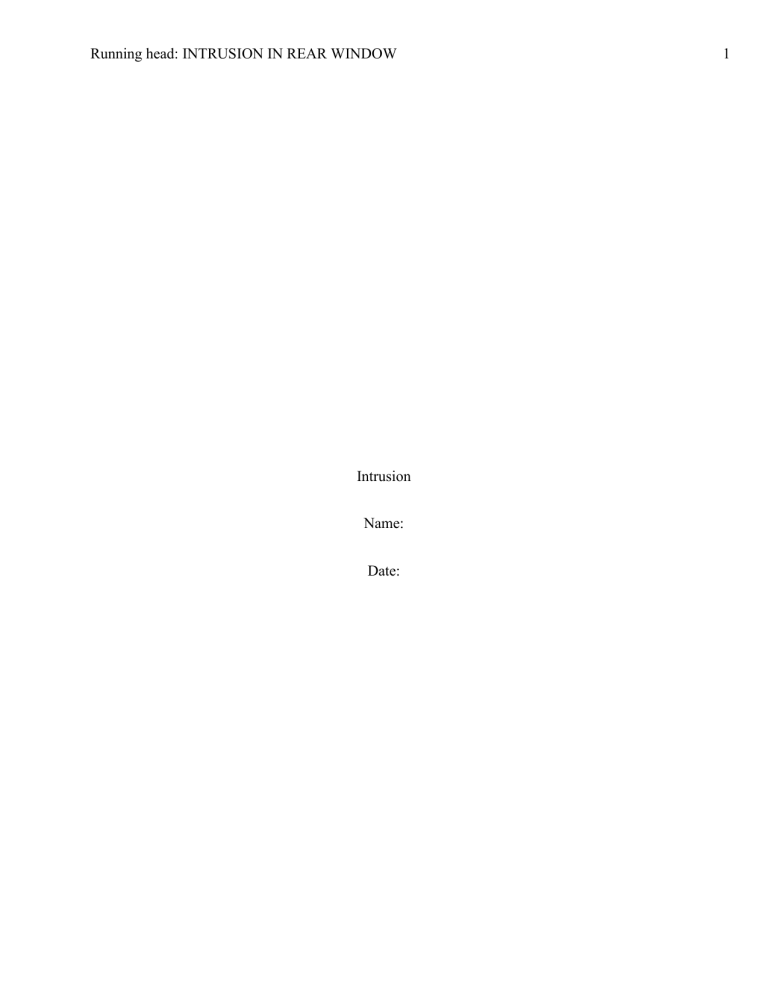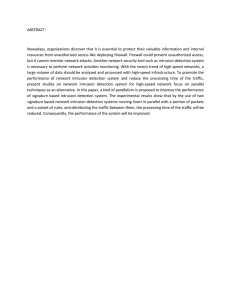
Running head: INTRUSION IN REAR WINDOW Intrusion Name: Date: 1 INTRUSION IN REAR WINDOW 2 Introduction The immense of cases focusing on the privacy implications of modern surveillance technologies are common. Intrusion with seclusion has been a long child of tort law problem. Courts struggle to have a balance on offering protection on individual seclusion and the freedom of expression and deeds of the ones who offer a threat to others seclusion. A plaintiff has the protection of privacy interests from the court in case he shows any of these two things. One is that he had an actual expectation of privacy and the expectation was reasonably objective. Second, is that the intrusion to privacy was highly offensive. Some of the technologies have the ability to discover from conditions and facts that people may broadcast unknowingly. In such a case, it can be disputed that there is no actual expectation of privacy in the information. More to this technology have the ability to gather private information legitimately in an unobtrusive way that makes it hard to categorize it as highly offensive (Brower, 2016). Due to this reason, many victims of intrusion will experience tough tasks to meet the required proof threshold. In Rear Window, Jeffries surveillance can be termed not to be technologically mediated at first. This raises the issue of justification of surveillance. The viewer of the movie raises an ethical problem that relates to ethical justification of the potential privacy threat of the watching. Jeffrey speculations involving questioning ethical grounds of his deeds show an ambiguity as he finds spying justified if it leads to solving a crime (Dolin, 2016). According to Hitchcock watching other people for pleasure especially voyeuristic is a common human characteristic. When questioned of the main character Jeffries being a snooper he says, “Sure, he’s a snooper but aren’t we all? I’ll bet you that nine out of ten people if they see a woman across the courtyard undressing for bed, or even a man pottering around in his room, will stay and look. A professional photographer, Jeffries who is disabled after breaking his leg in the process taking daring photographs in a motor race at the expense of his comfort takes advantage of his situation and start snooping. In his usual snoop activity, he strips on Thorwald’s acts that are weird of leaving and coming back to the house quite a number of times in the house in nighttime carrying his suitcase and a large knife cleaning (Brower, 2016). Jeffries picks the binoculars but somehow delays when he considers his voyeuristic intentions and then discovers that the camera can act as an alibi for the viewing to replace the ill-suited curiosity with the cool distance of work. Due to the immobility of broken leg, the ability to act is deprived and he gives instructions to Stella and Lisa to work on his behalf. Jeffries and his colleague's actions can be treated as an intrusion upon seclusion going contrary to laws that guarantee the right to privacy. For example, his actions to peep and surveillance through the windows of his neighbours are an invasion of privacy. He intrudes into the neighbour private affairs solitude and the intrusion would be objective to a reasonable person. Privacy invasion in Rear window is an unjustifiable intrusion into the personal life of Thorwald without consent. The causes of tort types of invasion in the movies are intrusion upn seclusion and public disclosure of private facts. INTRUSION IN REAR WINDOW 3 References Brower, S. (2016). Channelling Rear Window. Journal of Popular Film and Television, 44(2), 89-98. Dolin, S. (2016). Rear Window: The Ethics of Seeing and Telling. Witness, 29(1), 26-44.


